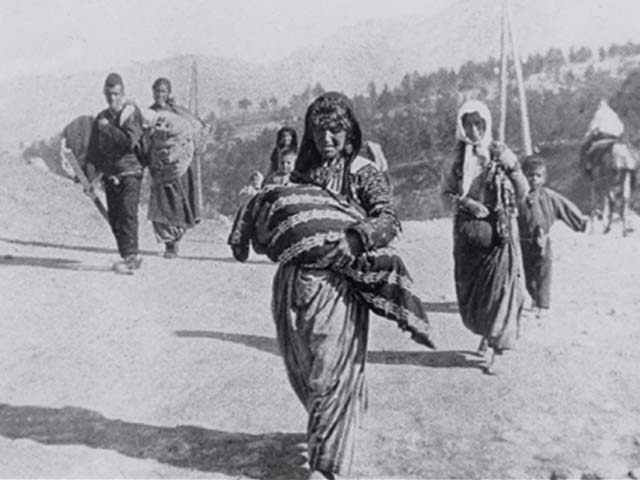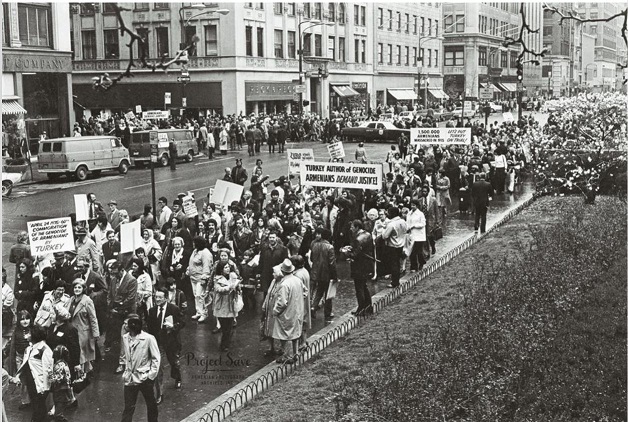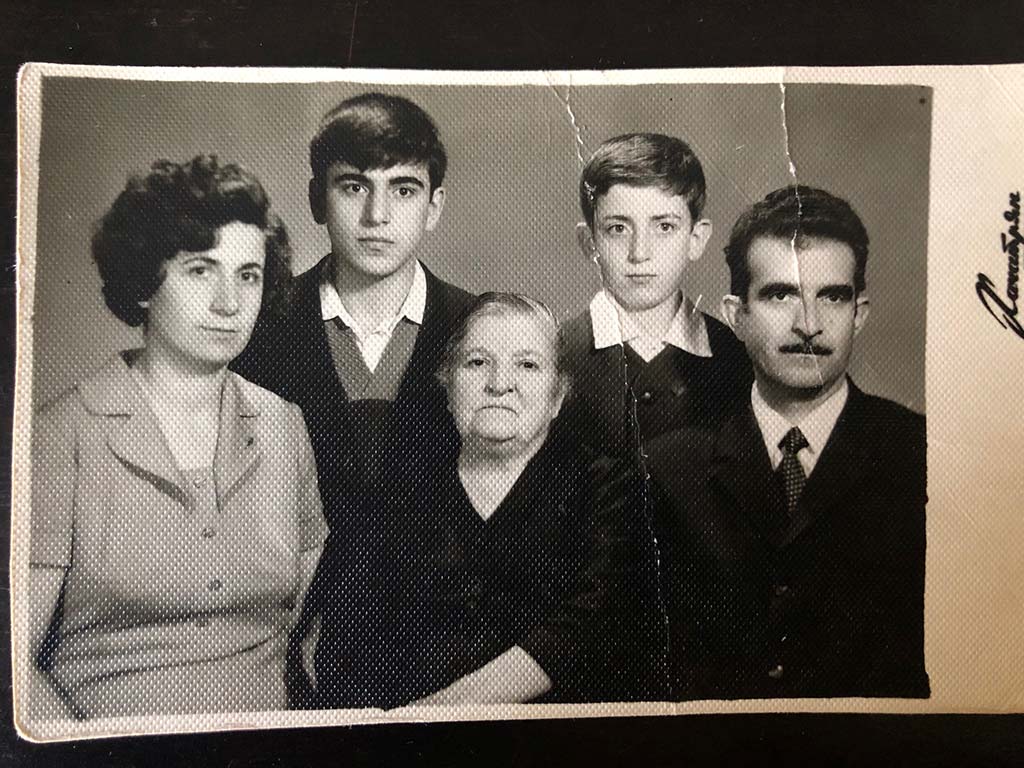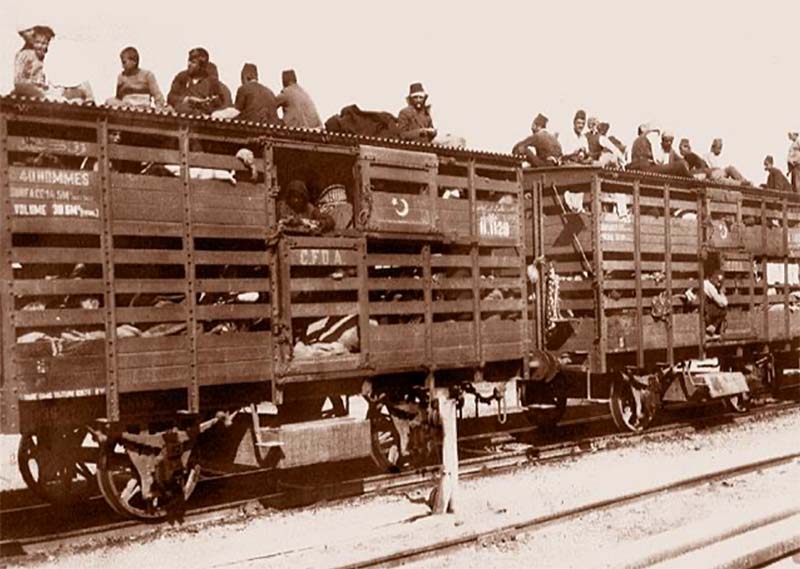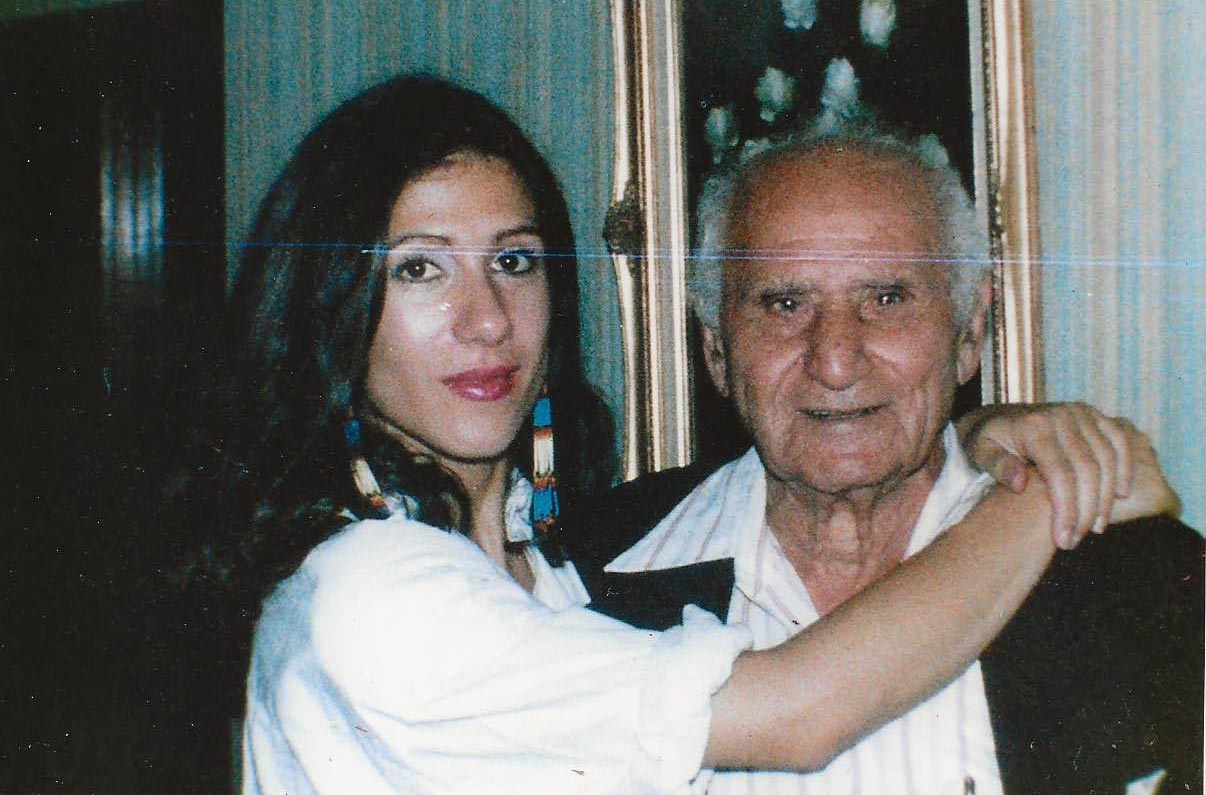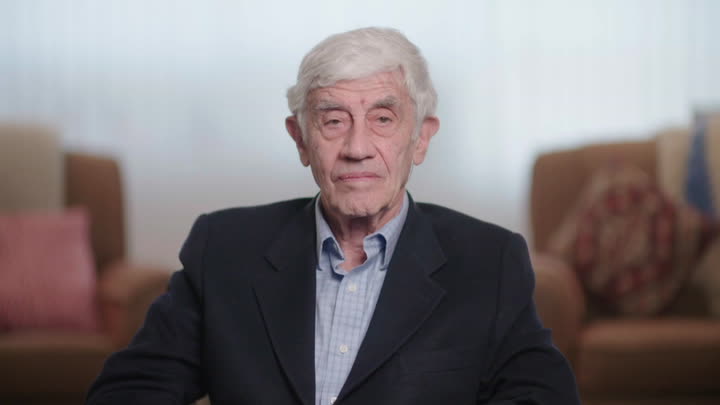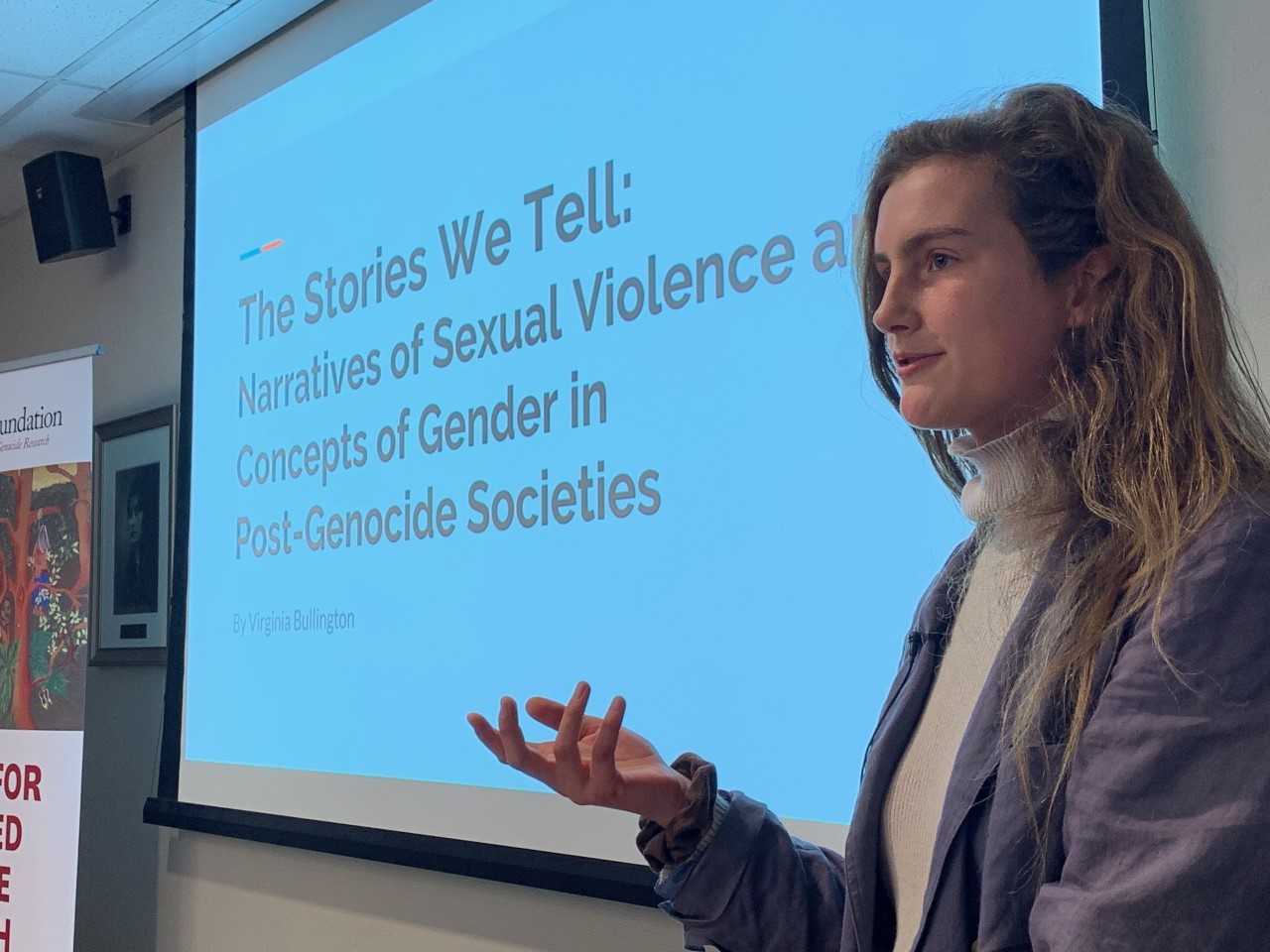Armenian Genocide
The Armenian Genocide testimony collections include several categories of individuals linked directly or indirectly to the calamity. The vast majority are Armenian Genocide survivors, while others are Armenian descendants (second and third generation), scholars, rescuers and aid providers, foreign witnesses, and Yezidi survivors, as well as Arab and Greek eyewitnesses. The interviews were recorded in 10 languages in 13 countries.
About the Collection
The VHA currently contains 1,096 interviews relating to the Armenian Genocide. Over three hundred of them were recorded between 1975 and 2005 by filmmaker J. Michael Hagopian and the Armenian Film Foundation. They were recorded in 13 countries and in ten languages, including: Arabic, English, Armenian, and Turkish. Richard Hovannisian's oral history collection was added to the Visual History Archive in 2018.
Brief Historical Background
In 1914, the Ottoman Empire entered the First World War, joining the Central Powers. The Young Turks believed that entering the war would solve the problems of the Empire. However, serious losses in the war with Russia resulted in the Ottoman authorities blaming the Armenians for their ethnic kin in Russia fighting against them. By the winter of 1914-1915, measures to destroy the entire Armenian population, including men, women, and children were being prepared.
On April 24, 1915, the Committe for Union and Progress (CUP), the leading nationalist party of The Young Turks, arrested over 200 Armenian representatives in government, teachers, writers, religious leaders, and other intellectuals in Constantinople (Istanbul) and executed most of them. Ottoman Armenian men who had previously been conscripted into the Ottoman armies were disarmed and murdered. This date is often considered the day in which the intentions of the Armenian Genocide were realized and is commemorated annually by Armenians worldwide.
Beginning in 1915, coded telegraph messages, sent by leading CUP officials, ordered the deportation of the Armenian people from all over the empire to “relocation centers.” Most men and teenage boys were separated from these deportation caravans and killed soon after. The women and children were forced to walk for weeks on difficult terrain away from major roads without any food or shelter. During the deportations, many died or were killed, while others were kidnapped or raped. Their final destination was the Syrian Desert where Armenian deportees were massacred or eventually died due to starvation and fatigue. In certain areas, Armenians took up desperate armed resistance to protect themselves from massacre and deportation. While the owners were absent, Armenian homes, businesses, churches, along with private properties were looted, legally confiscated or destroyed by the local population and government.
Those who survived had different fates. Conversion to Islam was generally not an option, but there were many cases of Armenian women and children becoming Islamized through adoption or kidnapping by Turks, Kurds or Arabs. Some survivors took refuge in orphanages set up by American and European missionaries; those who survived the deportations ended up in refugee camps throughout the Middle East, others saved by their neighbors made it further West, or managed to take refuge among Armenians in Istanbul and Izmir, where, because of the presence of foreign diplomats, no mass killings had taken place. As a result, the Armenian community spread around the world.
Aftermath
At the end of World War I, the CUP functionaries and government officials were tried in military tribunals. Though the main perpetrators were found to be guilty and sentenced to death, their sentence was never carried out. At the time, the annihilation of the Armenians was known as a “crime against humanity.” In 1944, Raphael Lemkin, who had studied the 20th Century massacres of Armenians and witnessed the extermination of the European Jewish population, would coin the term “genocide” in order to define the attempt to destroy an entire people. The Armenian Genocide is denied by the Turkish government today, and is illegal to be spoken about as such in Turkey.
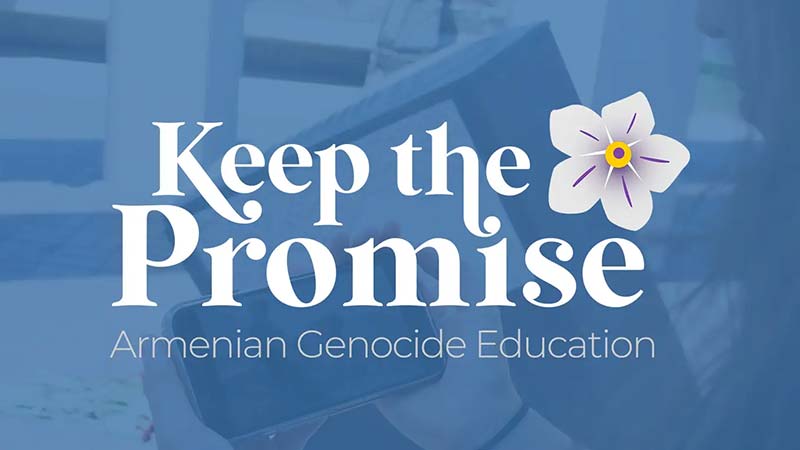
Keep the Promise
Armenian Genocide Education
The USC Shoah Foundation’s Keep the Promise - Armenian Genocide Education program on IWitness leverages the power of testimony and offers effective strategies to integrate teaching and learning about the Armenian experience before, during and after the Armenian Genocide. Testimony from Armenian Genocide collections at the USC Shoah Foundation provide first-hand experiences and reflections of Armenian Genocide survivors, witnesses and descendants that humanize and contextualize this history, Armenian culture and preservation of identity in the diaspora as well as the collective effort for survival and resilience.
The Armenian Genocide
Through this Information Quest activity, students will learn about the history of the Armenian Genocide, learn to identify the differences between sources of information on the same topic, and recognize the value of multiple perspectives in the learning process.
grades 1 Hour
time Info Quest
activity
Dangers of Genocide Denial: A Close Up on the Armenian Genocide
Students will consider the concept of genocide denial, its dangerous implications and the importance of addressing these issues. Through the focus of the Armenian Genocide, students will analyze testimony to identify the forms genocide denial can take and its long-term consequences on memory and understanding of the human impact of the historical events.
grades 1 Hour
time Mini Quest
activity
Memory and Commemoration of the Armenian Genocide
Students will watch and analyze testimony from an Armenian survivor and additional sources to discover the importance of collective commemoration of this history. Students will also examine different examples of how the international Armenian community commemorates the Armenian Genocide until today. By the end of this activity, students will design a creative form of commemoration dedicated to the victims and survivors of the Armenian Genocide.
grades 1.5 Hours
time Mini Quest
activity
IWitness Resources
Find more activities and resources to teach about the Armenian Genocide on our online educational platform IWitness.
Armenian Film Foundation Collection
The Armenian Film Foundation’s film archive contains 333 interviews with more than 380 interviewees Armenian Genocide survivors, descendants, witnesses, scholars and other types of experiences. Interviews were conducted and recorded throughout the world in 10 countries, primarily in English and Armenian—some in rare Armenian dialects—though other interview languages include Arabic, Greek, Spanish, French, Kurdish, Turkish, German, and Russian. Most of the interviews were conducted by Hagopian, who recorded them on 16 mm film between 1972 and 2005 for a series of documentaries. About half a dozen interviews were also conducted by Carla Garapedian after 2011.
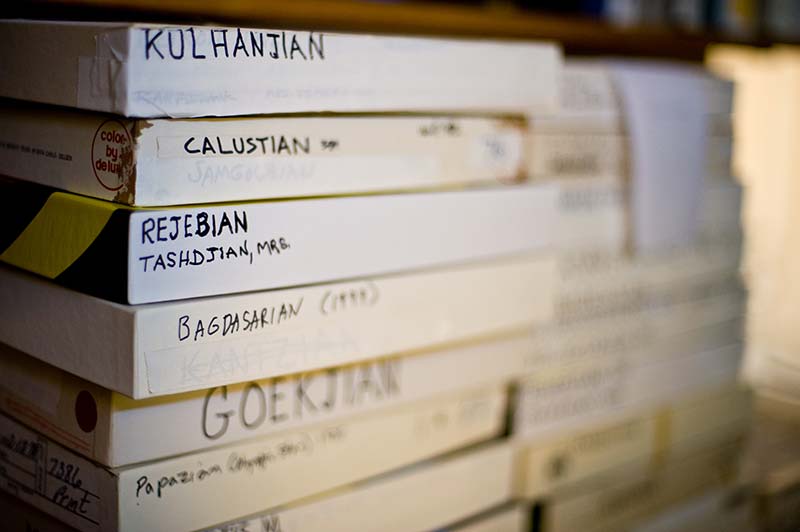
Richard G. Hovannisian Armenian Genocide Oral History Collection
The Richard G. Hovannisian Armenian Genocide Oral History Collection contains more than 1,000 interviews of Armenian Genocide survivors and descendants. They primarily consist of full-life histories which illuminate Ottoman-Armenian life, the Genocide and post-Genocide era, and the diaspora experience. Survivors are from all over the Ottoman Empire and also many interviewees from the former Russian and Persian empires. Testimonies are mostly in Armenian and English, with some in Turkish and Spanish.
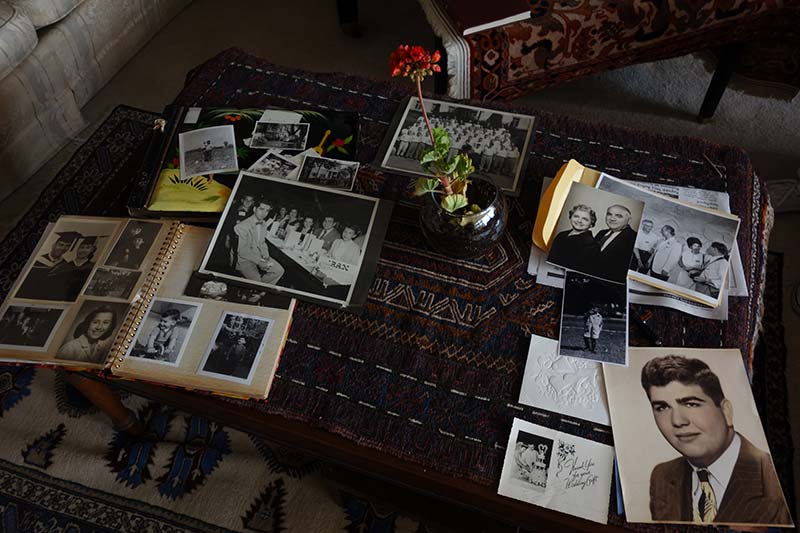
Related Articles
